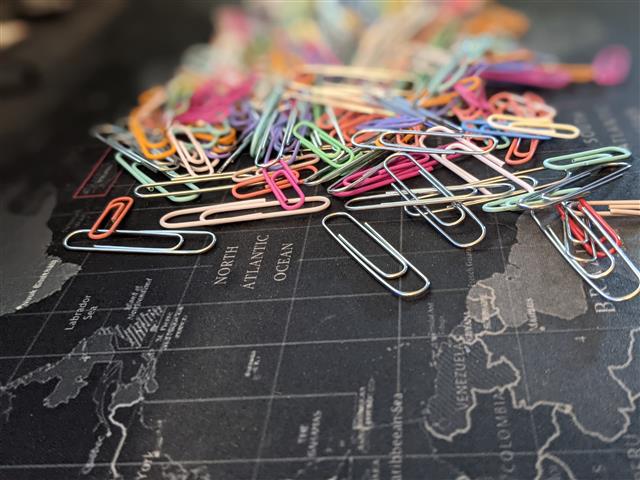One positive about staying safe indoors during the Covid-19 lockdown is the possibility to require time for the little things, such as viewing the return of migrant birds in summer.
Locating the delight in the little points will rather usually make all the distinction to the method you feel as well as watching the returning birds is something that the majority of people can delight in doing at no extra expense.
It will certainly likewise be one more method to assist maintain youngsters delighted– as well as can aid to enhance their understanding of the environment.
From the start of April numerous favourite varieties of birds make their back to the UK to delight in the summer season here.
Which birds migrate from England over winter?
The RSPB approximates that as many as 40 percent of the globe’s birds migrate.
In the United Kingdom we see birds that migrate here for a milder winter, as well as birds that breed here in springtime after that migrate south in fall.
These southerly migrants returning for the springtime will be the ones to watch out for over the coming weeks while you remain in the house.
And also, if you are really fortunate, you can even identify a bird on a stopover as it breaks up a much longer trip north or south, such as an Artic tern.
People living near to the coast can likewise look out for birds that endure mixed-up as they return for spring.
Most birds that head north to spend the springtime and summer in the UK do so to enjoy more area to nest in, as well as with fewer predators.
Food supplies another temptation with the pleasant, yet typically damp, summers offing up a banquet of insects for migrant birds to delight in.
Spotting migrating spring birds
Most of the more quickly recognisable birds will make a return to the UK from the start of April, with birds continuing to arrive right into May. These consist of:
Cuckoo— An unique bird to spot; cuckoos are usually only in the UK for a short amount of time. Showing up in spring to lay an egg after that avoiding southern once again in July after leaving it in one more bird’s nest.
Swallows— Murmurations of starlings of one of nature’s most spectacular sights as well as should be more prevalent with summer. Understood to be noisy, starlings have colourful, iridescent feathers and triangular wings that make them unique.
Martins— You could well discover that these tiny birds make their home in your roof covering on their springtime return. Bluey black plumes, a white underneath and white above the tail aid to distinguish Home Martins.
Turtle doves— With black and brownish wings, turtle doves are one of the smaller sized doves with a distinctive, gentle, telephone call.
Willow Warbler— The little Willow Warbler carries out a massive journey to Africa yearly. It has grey/green plumes, a yellow chest and also a red stripe over its eye.
Wheatear— These birds can be discovered hopping along the ground and also are identified by a stripe across the eye, an orange breast and brown/black quill.
Nightingale— This small brown bird is most easily defined by its attractive song.
Swift— This medium-sized, unique bird spends a lot of its time flying and also can be detected by its shrilling sound, dark brown plumes and also forked tail.
Flycatcher— Pied flycatchers and detected flycatchers head to the UK from Africa. The pied flycatcher is a little black and white bird while the seen flycatcher is brown/grey. They can be seen grabbing flying bugs in mid-air.
Viewing wild birds return to your yard is a relaxing as well as satisfying activity. Must you nonetheless, experience issues with hostile ‘pest’ birds, such as seagulls and pigeons, you might require the support of a specialist bird control business.
Not all birds migrate. A few, such as partridges, never ever move greater than a kilometre or so from where they were birthed. These are called less active birds.
Routine migrants
The most famous are long distance migrants, such as swallows, which breed in Europe as well as invest the winter in Africa. However you may be shocked to learn the amount of others go to it too. Also the blackbirds in your garden in January can well be winter visitors from Eastern Europe.
A minimum of 4,000 species of bird are regular migrants That’s about 40 percent of the world’s overall. But some parts of the world have a greater proportion of migrants than others.
In far north regions, such as Canada or Scandinavia, the majority of species migrate southern to escape winter. In pleasant regions, such as the UK, regarding half the varieties migrate– specifically insect-eaters that can’t discover sufficient food throughout winter.
In exotic areas, such as the Amazon.com rain forest, less varieties migrate, because the weather and food supply there are a lot more trustworthy all the time. Various species migrate in different methods.
Irruptions, moult as well as altitudinal migrants.
Irruptions
Irruption is a mass arrival of birds that do not typically go to the UK in great deals. This happens with some northern types, such as waxwings, when their population expands as well huge for the food supply.
. once some waxwings have eaten all the berries in their normal Scandinavian winter quarters, they have to go across the sea to the UK to find extra. Irruptions only take place every 10 years or so; we can not anticipate to see waxwings every winter.
Altitudinal migrating birds
Rather than migrating in between north as well as south or east and western, some birds migrate up and down. This is called altitudinal movement – or vertical movement. Birds that type in upland areas in summer head to lowland locations in winter trying to find a milder environment and also even more food.
Although the journey might not be long, it usually includes rather a modification in way of life. Altitudinal travelers in the UK include skylarks, meadow pipits as well as snow pennants.
Moult migrants
When birds lose their old plumes in order to expand a new set, molting is. All birds do this every year. However some, such as shelducks, lose all their trip plumes with each other and also can not fly for a while. This makes life rather risky, so shelducks migrate to do the job a lot more securely.
In late summer, after reproducing mores than, they fly to the island of Heligoland in the North Sea – where they can molt with little disruption or risk from killers. A few likewise fly to moulting sites better to home, such as Bridgwater Bay in Somerset. They all go back to their usual homes as soon as their new feathers have expanded.
Summer, winter, passage and also partial migrants
Summer migrating visitors
Summer visitors are birds that show up in spring from the south to reproduce. Lots of are insect eaters. They invest summer here, after that they– and their brand-new young– return southern in autumn.
They include martins and swallows, warblers, flycatchers, wheatears, whinchats, redstarts, nightingales, yellow wagtails, tree pipits, cuckoos, swifts, nightjars, turtle doves, hobbies, ospreys, terns and Manx shearwaters. Several other seabirds, such as gannets as well as puffins, also arrive on our shores in springtime after spending the winter mixed-up.
Winter migrating visitors
Winter visitors are birds that arrive in fall from the north as well as east to spend the winter in the UK, where the weather is milder as well as food is much easier to find. In spring, they return to their breeding quarters.
They consist of fieldfares, redwings, bramblings, Bewick’s and whooper swans as well as lots of kinds of ducks, geese and wading birds. Lots of water birds also invest the winter on the sea around the UK coastline, consisting of common scoters, excellent red-necked grebes and north divers.
Passage travelers
Passage migrants are birds that visit in the UK during their long trip north or south, such as black terns and green sandpipers. They use the UK like a gas station, taking a few weeks during spring and also autumn to relax and refuel prior to proceeding.
Some types, such as dunlins, act in a different way according to where they come from. The smaller dunlins that breed in Greenland and Iceland are flow travelers– stopping off with us on their means to west Africa. The larger dunlins that reproduce in Russia and northern Scandinavia stick with us for the whole winter.
Partial migrants
Partial travelers are birds that migrate in some places, however not in others. The majority of starlings that breed in the UK remain placed for the winter. However starlings that breed in eastern Europe, where winter is much cooler, migrate to the UK in winter. The same chooses chaffinches, robins, lapwings, coots as well as numerous other typical birds.
Partial migration relies on the weather, so it is never the very same from one year to the following. Birds that rarely relocate in all in Britain the UK might migrate in substantial numbers in other places. In Estonia, one birdwatcher counted 7,300 siskins, 6,200 wonderful tits, 5,600 woodpigeons, 3,400 jays, 780 coal tits as well as 460 blue tits migrating in a single day!
Not all birds migrate. Instead of moving between north as well as south or east as well as west, some birds migrate up and also down. Summer site visitors are birds that arrive in springtime from the south to reproduce. Partial travelers are birds that migrate in some areas, but not in others. The very same goes for chaffinches, robins, lapwings, coots and also several other common birds.



